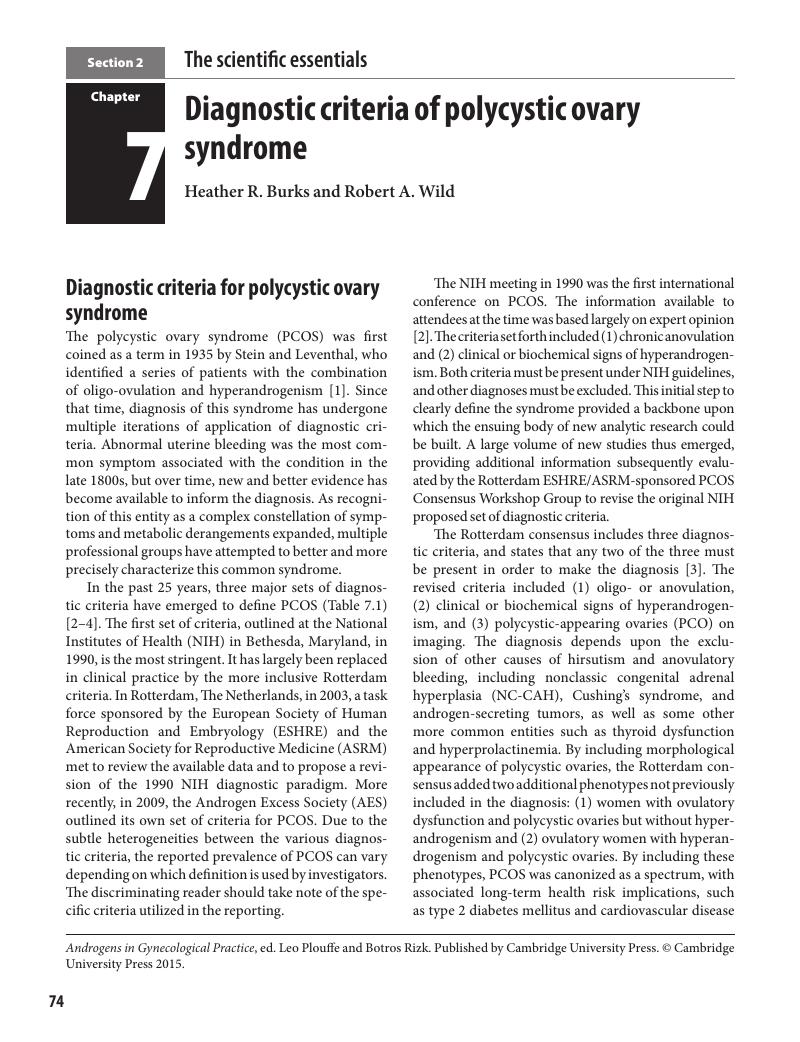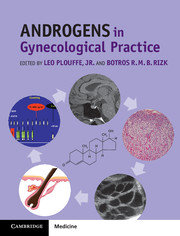Book contents
- Androgens in Gynecological Practice
- Androgens in Gynecological Practice
- Copyright page
- Contents
- About the editors
- Dedication
- Contributors
- Preface
- Section 1 Managing the basics
- Section 2 The scientific essentials
- 5 The androgen receptor: basic structure and function
- 6 Androgens in postmenopausal women: Their practically exclusive intracrine formation and inactivation in peripheral tissues
- 7 Diagnostic criteria of polycystic ovary syndrome
- 8 Androgen effects on the skin
- 9 Polycystic ovary syndrome and cardiovascular risk
- 10 Effects of androgens on female genital tract
- Section 3 Learning from the extremes
- Section 4 The tool kit
- Index
- Plate Section
- References
7 - Diagnostic criteria of polycystic ovary syndrome
from Section 2 - The scientific essentials
Published online by Cambridge University Press: 05 July 2015
- Androgens in Gynecological Practice
- Androgens in Gynecological Practice
- Copyright page
- Contents
- About the editors
- Dedication
- Contributors
- Preface
- Section 1 Managing the basics
- Section 2 The scientific essentials
- 5 The androgen receptor: basic structure and function
- 6 Androgens in postmenopausal women: Their practically exclusive intracrine formation and inactivation in peripheral tissues
- 7 Diagnostic criteria of polycystic ovary syndrome
- 8 Androgen effects on the skin
- 9 Polycystic ovary syndrome and cardiovascular risk
- 10 Effects of androgens on female genital tract
- Section 3 Learning from the extremes
- Section 4 The tool kit
- Index
- Plate Section
- References
Summary

- Type
- Chapter
- Information
- Androgens in Gynecological Practice , pp. 74 - 78Publisher: Cambridge University PressPrint publication year: 2015

